LETTERS FROM HASKELL
Gov. Charles Robinson Letters
Charles Robinson was born at Hardwick, Mass., on July 21, 1818, the son of Jonathan and Huldah (Woodward) Robinson. Educated in Massachusetts and Vermont, he began practicing medicine in 1843 at Belchertown, Mass. The same year, he married his first wife, Sarah Adams, and had two children.

In 1849, following the deaths of his wife and children, Robinson decided to visit California in an attempt to improve his health and obtained an appointment as physician to a company bound for the gold fields of California. After a short time spent in prospecting, he settled in Sacramento working as a restaurateur and newspaper editor.
During this time Robinson became involved in a controversy between settlers and land speculators. In one of these conflicts Robinson was wounded and another man killed. Robinson was indicted for murder and spent ten weeks imprisoned before being acquitted. While in jail he was elected to the California legislature
In 1851 Robinson decided to return to Massachusetts and began the trip via the Isthmus of Panama. His ship was wrecked off the Mexican coast, so he signed as surgeon on a vessel bound for Cuba returning to Massachusetts that September and immediately resumed his medical practice.
On October 30, 1851, he married Sara Tappan Doolittle Lawrence, who had been his patient before his California adventure. While in Fitchburg, and in addition to his medical practice, Robinson edited the Fitchburg News.
As the interest of the country turned to the opening of Kansas, Robinson wrote several letters about that place through which he had passed in 1849. His letters attracted considerable attention and Robinson found himself involved in the Free-State effort to settle the new territory. On June 28, 1854, he left Fitchburg for Kansas as an agent of the Massachusetts Emigrant Aid Company, assigned the job of selecting company town sites. Later he returned to St. Louis to meet and guide the company’s second party of emigrants to Kansas. They arrived at the site of Lawrence, on September 11. From that time on Robinson was active in helping Free-State settlers find homes in Kansas and was soon recognized as a leader in the movement to have Kansas admitted as a free state.
Under the Topeka Constitution of 1855, the first attempt to have Kansas admitted, Robinson was elected “governor.” In May, 1856, while en route east, he was arrested for treason and conspiracy against the United States. After several months in prison at Lecompton, the Proslavery capital, he was finally acquitted.
Under the Wyandotte Constitution, by which Kansas was finally admitted in January, 1861, Robinson was again elected governor and upon admission assumed the office. He served only one term, retiring on January 12, 1863.
From 1864 to 1874 he was a regent of the University of Kansas, which he had helped found and to which he had donated considerable property. He was elected to the state House of Representatives in 1871 and to the Senate in 1874. He again ran for governor of Kansas in 1882, and was elected in 1890, this time as a Democrat. He ran again but was defeated once more.
For a time in 1887-1888 Robinson was superintendent of Haskell Institute, a federal Indian school located at Lawrence. In 1892 he wrote a book about the territorial struggle which he called The Kansas Conflict. He was again appointed a regent of the University of Kansas in 1893, which office he held until his death on August 17, 1894.
Photograph and biographical information courtesy of the Kansas Historical Society (www.kshs.org).
As these letters came from Robinson's personal collection, very few were actually written by him. However, the correspondence contained in this collection does a great deal to illustrate his political influence, his priorities as superintendent, and ambitions for the school.
A selection of these letters can be found below. However, a complete listing is available here.













